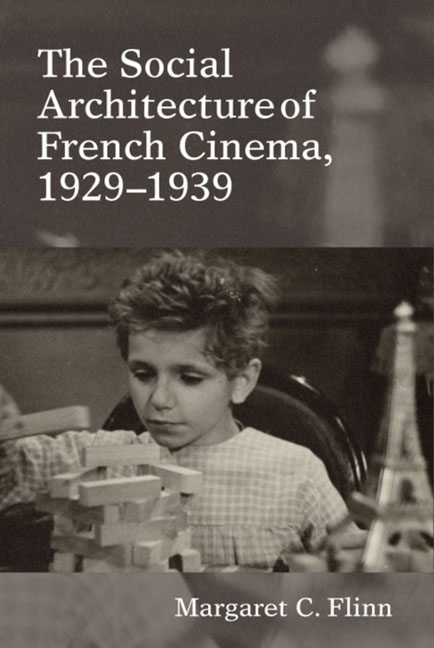Book contents
- Frontmatter
- Contents
- List of Illustrations
- Acknowledgements
- Introduction: An Architecture of Social Being
- 1 The Spatial Constitution of 1930s Documentary
- 2 René Clair's City Views: Realism and Studio Paris
- 3 Intertext and Political Margins in Jean Renoir's Boudu sauvé des eaux
- 4 Traversing Built History in Architectural Documentaries
- 5 Flâneuses and the Unmaking of Place
- 6 The Crowd as New Monumentality during the Popular Front
- Epilogue: Poetic Realism as Spatial Fable
- Notes
- Bibliography
- Filmography
- Index
6 - The Crowd as New Monumentality during the Popular Front
- Frontmatter
- Contents
- List of Illustrations
- Acknowledgements
- Introduction: An Architecture of Social Being
- 1 The Spatial Constitution of 1930s Documentary
- 2 René Clair's City Views: Realism and Studio Paris
- 3 Intertext and Political Margins in Jean Renoir's Boudu sauvé des eaux
- 4 Traversing Built History in Architectural Documentaries
- 5 Flâneuses and the Unmaking of Place
- 6 The Crowd as New Monumentality during the Popular Front
- Epilogue: Poetic Realism as Spatial Fable
- Notes
- Bibliography
- Filmography
- Index
Summary
In a renewed society, is Cinema destined—as I still want to believe—to become the art of the crowd, a powerful center of communion where new symphonic forms will be born in the tumult of passions used to aesthetic ends capable of elevating the heart?
—Élie Faure, “De la cinéplastique,” 1922In September 1946, Sigfried Giedion gave a lecture to the Royal Institute of British Architects on “The Need for a New Monumentality.” Giedion's call for a New Monumentality and its reverberations throughout the architectural community demonstrated a grave worry for modernist architects. Functionalism, long the watchword of Le Corbusier and his colleagues, “was not enough.” According to the editorial introduction to The Architectural Review 's symposium entitled “In Search of a New Monumentality,” modernism needed to broaden the term “to include a building's moral and emotional functions in addition to its material functions” (117). It is evident from the symposium's tone that architecture's role in fascism weighed heavily upon these European thinkers:
[…] these are times when beliefs and actions of the whole of society are being revalued and reassessed. The architect cannot remain an unquestioning vehicle. For better or worse we have lost our innocence, and must rebuild in the uncomfortable, if stimulating, light of self consciousness. (118)
Although for Giedion the architect must question the politics of his craft, particularly in the wake of fascism, the pre-war years were not without models for a New Monumentality. In his contribution to the symposium, Sigfried Giedion suggests that ephemeral spectacle may serve as a unifying social force, citing as his example the sound and light shows of the 1937 Expo:
Whoever had occasion during the Paris exhibition of 1937 to observe the hundreds of thousands, lined up in the summer evenings along the banks of the Seine and on the Trocadero bridge, and to watch them quietly waiting for the spectacles of water plays, light, sound and fireworks, knows that the perennial predisposition for great representation, even in the form of abstract elements, has not been lost […]. (127)
- Type
- Chapter
- Information
- The Social Architecture of French Cinema1929–1939, pp. 137 - 169Publisher: Liverpool University PressPrint publication year: 2014



